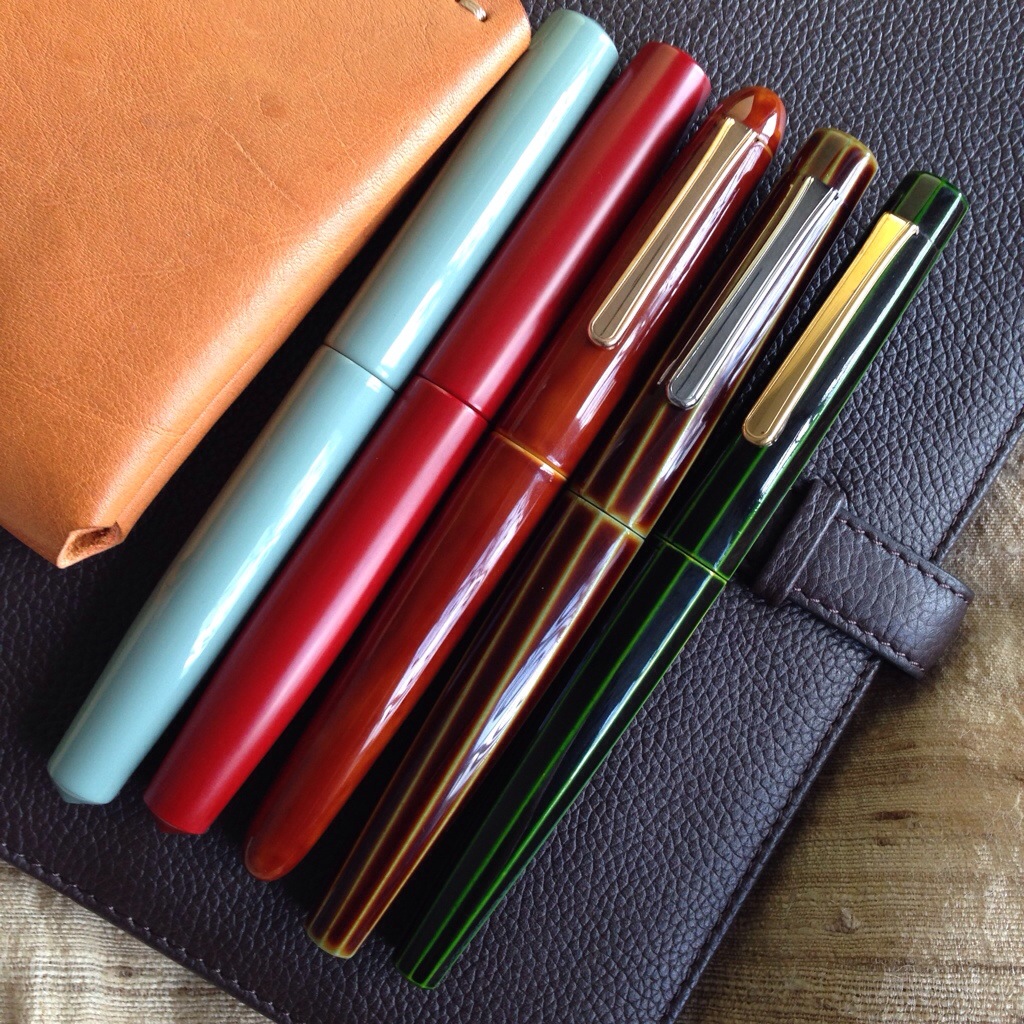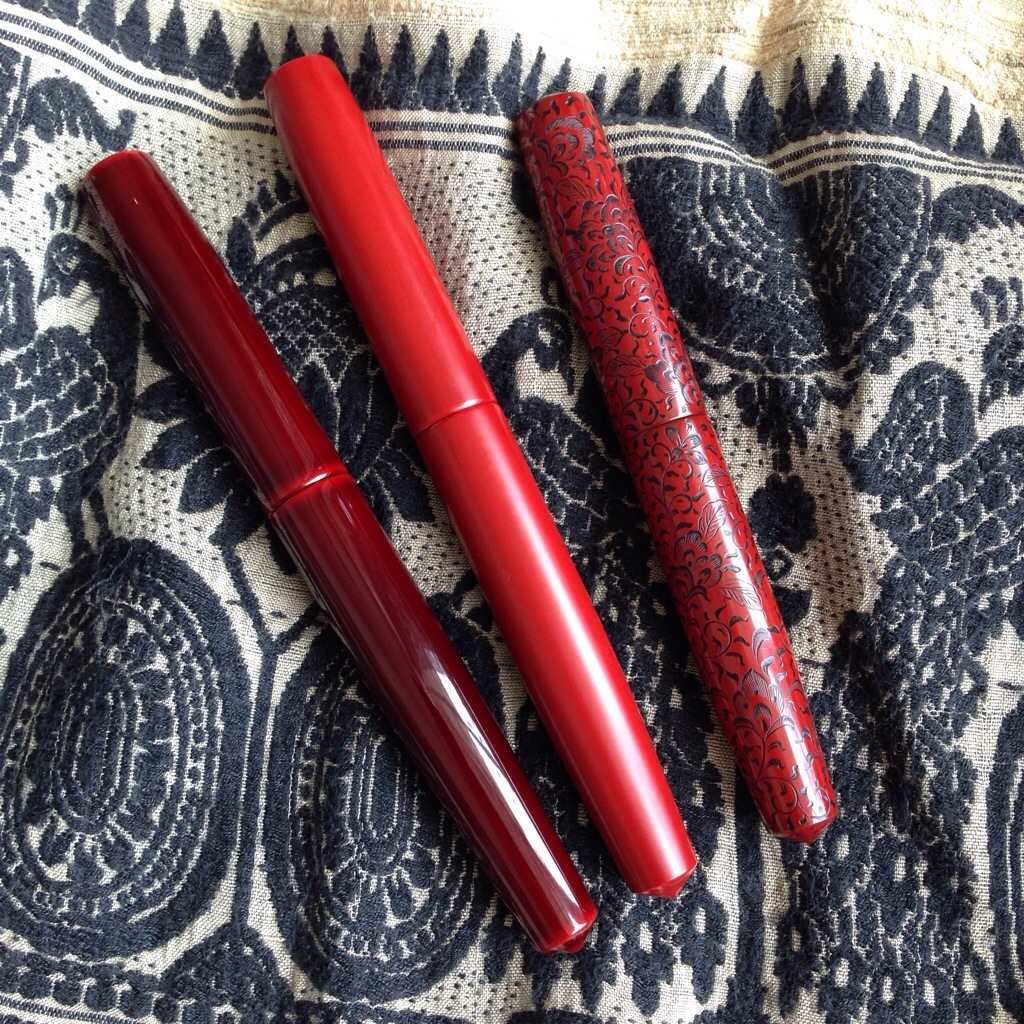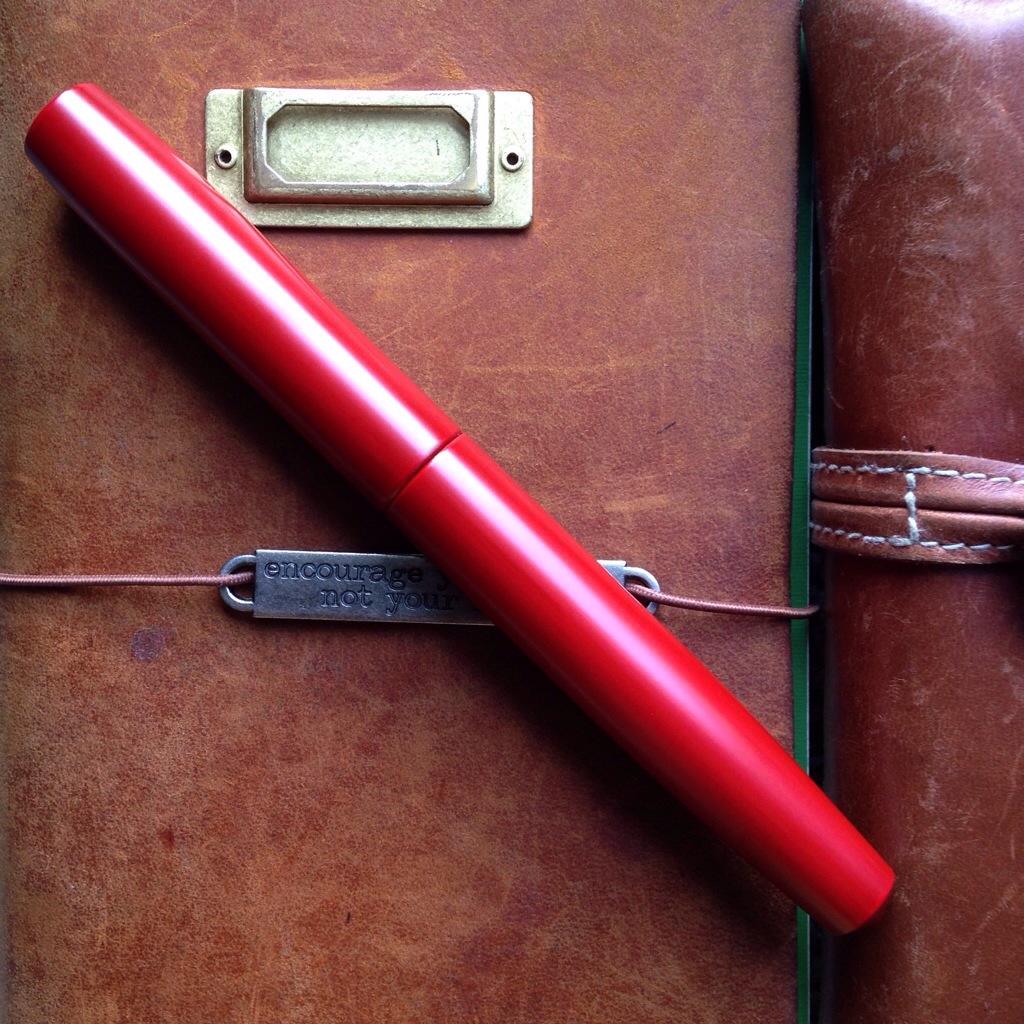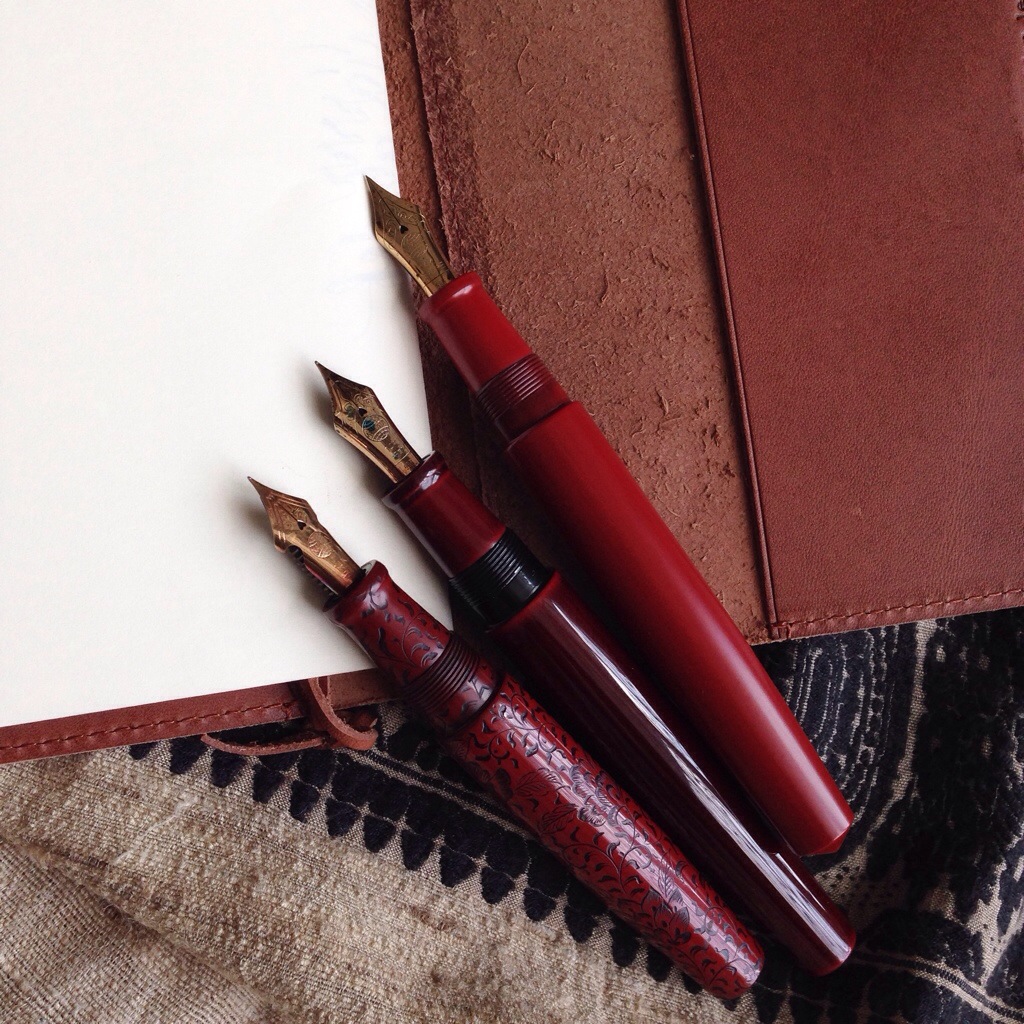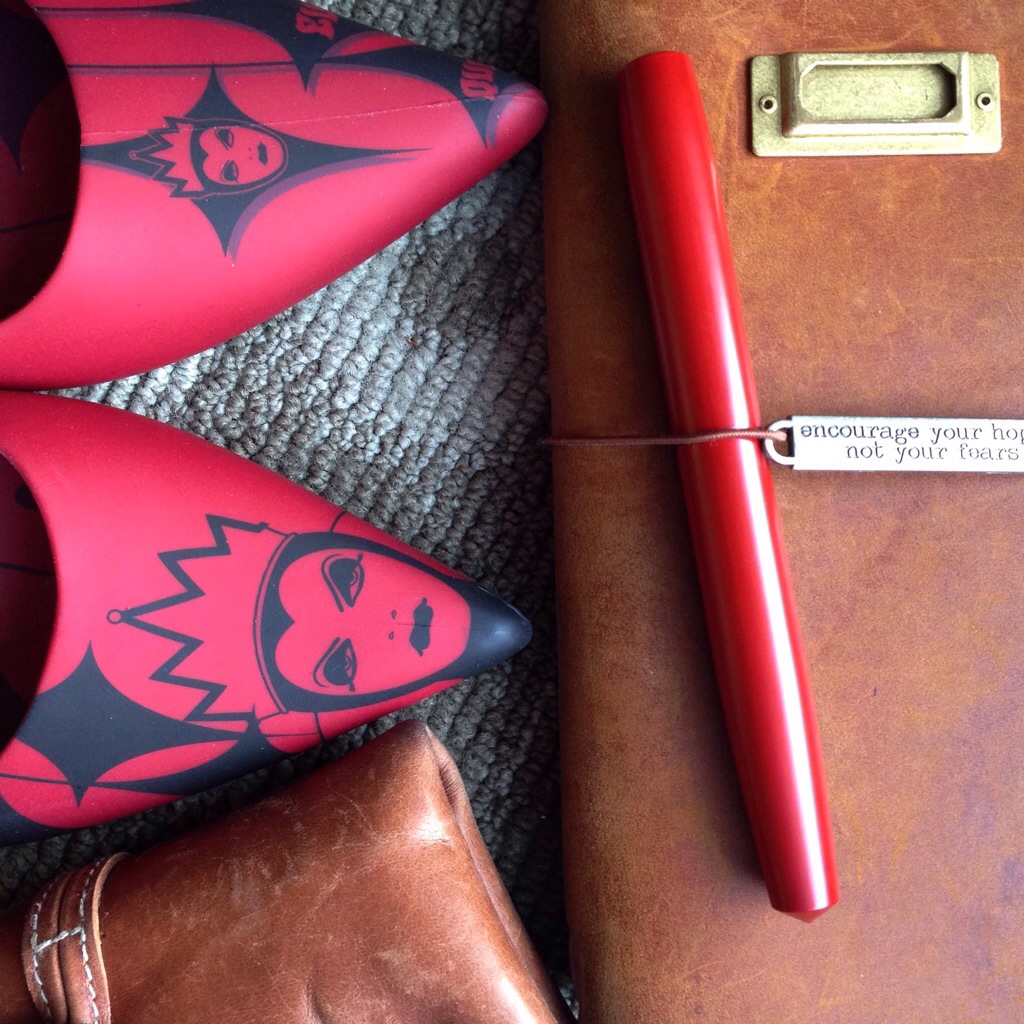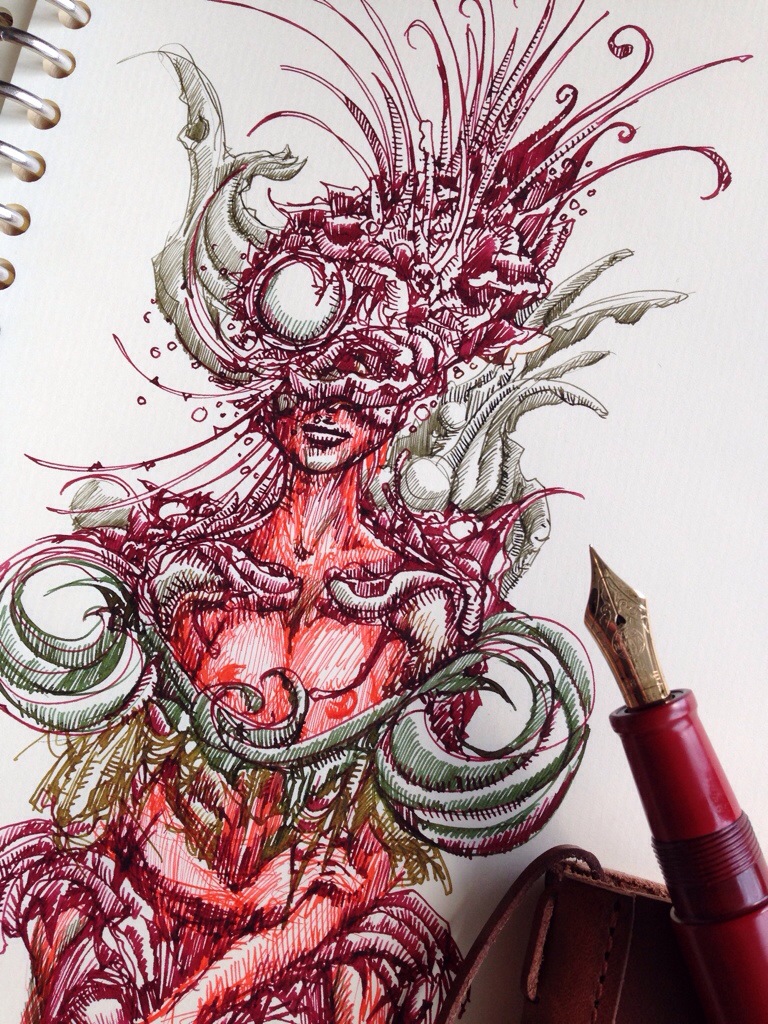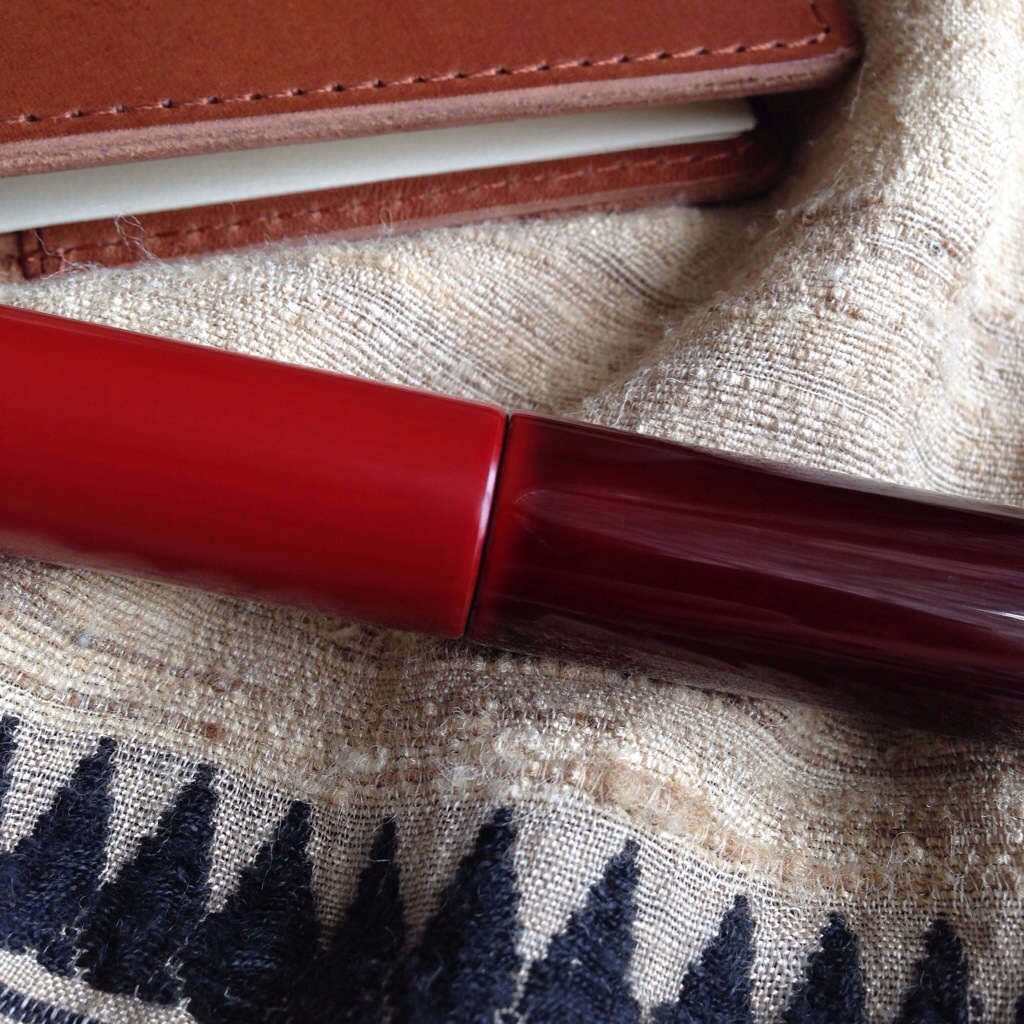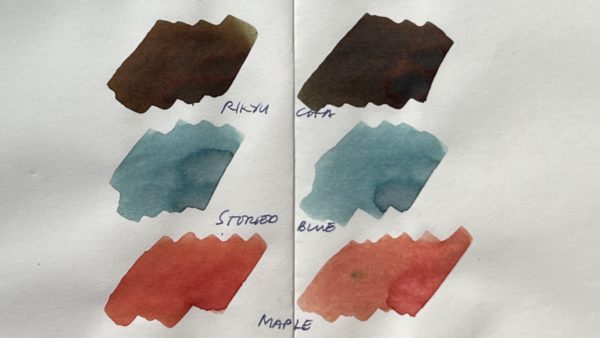“Why do you have so many Nakayas? What’s so special about them?”
There are as many kinds of beauty and utility as there are beholders and users. Beyond the object, there is also an appreciation of its history and its maker. The easiest things to use are not necessarily the easiest to make. A simple finish belies the complexity of the process, and we appreciate the beauty in its simplicity all the more.
Each Nakaya pen to me is a singular achievement. Urushi is a traditional finish; we are all familiar, in a broad way, with shiny lacquer boxes and tableware that somehow say “Japanese.” Nakaya craftspeople have taken traditional urushi and taught it new tricks. One of them is the hairline finish, where urushi is brushed to make it matte. It first came out in black, and now, in red. Called nuri hanashi shu, it is a warm red with muted highlights.
Like many of my Nakaya pens, this is a Long Piccolo. I find this size good for drawing, and the peaked ends are just plain cool.
It is very different from the aka tamenuri, or the red housoge.
This pen has a super extra fine nib and a medium flow, which means we see the lighter side of any ink used in it. Here, Noodler’s Burma Road Brown becomes light khaki.
Just for fun, I switched the two caps on the aka tamenuri and the nuri hanashi shu. Surprise – the red showing on the edge of the aka matches the matte red. I don’t think Nakaya will be making two-toned caps and barrels any time soon, but those of you with more than one Nakaya might get a kick out of this. 🙂

